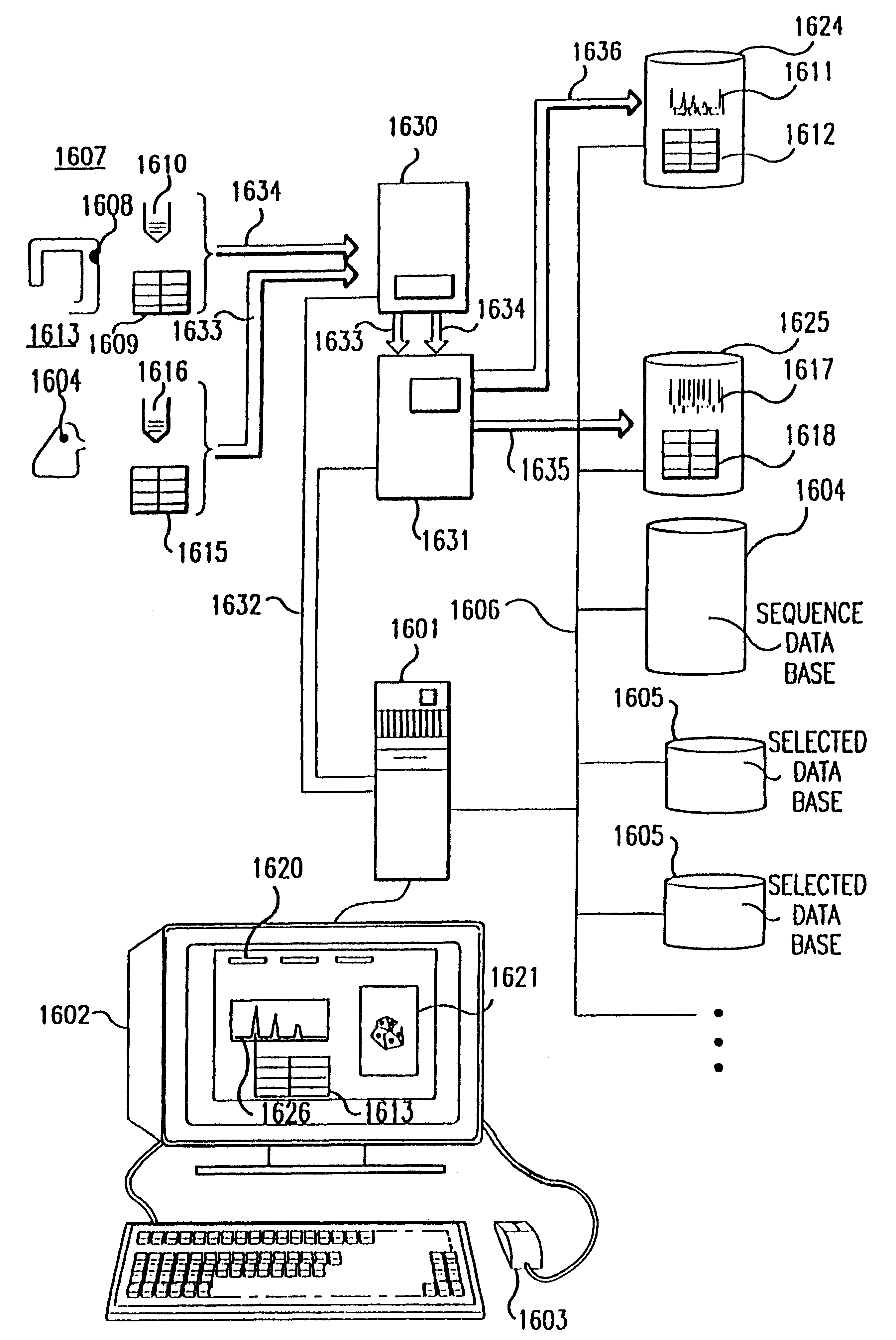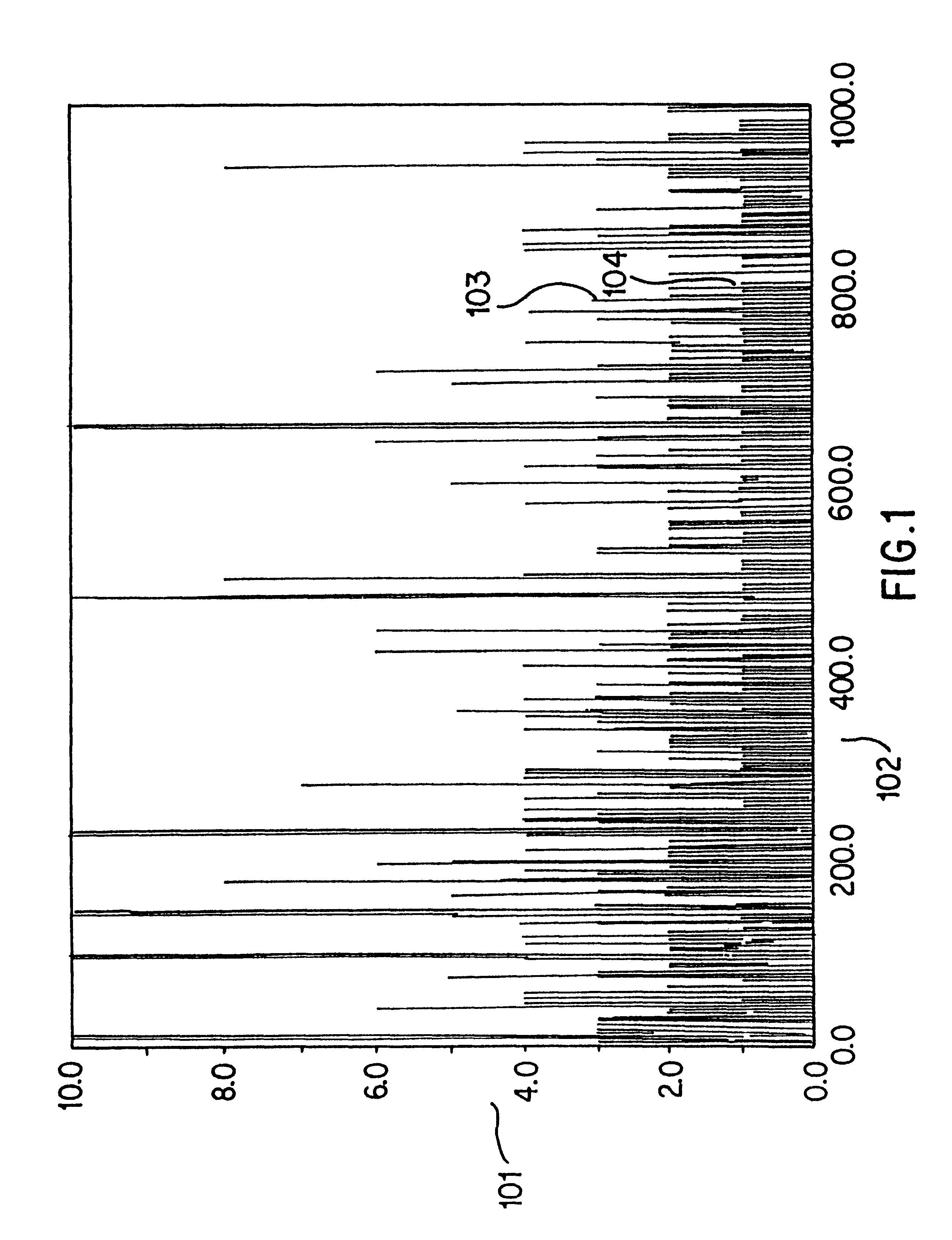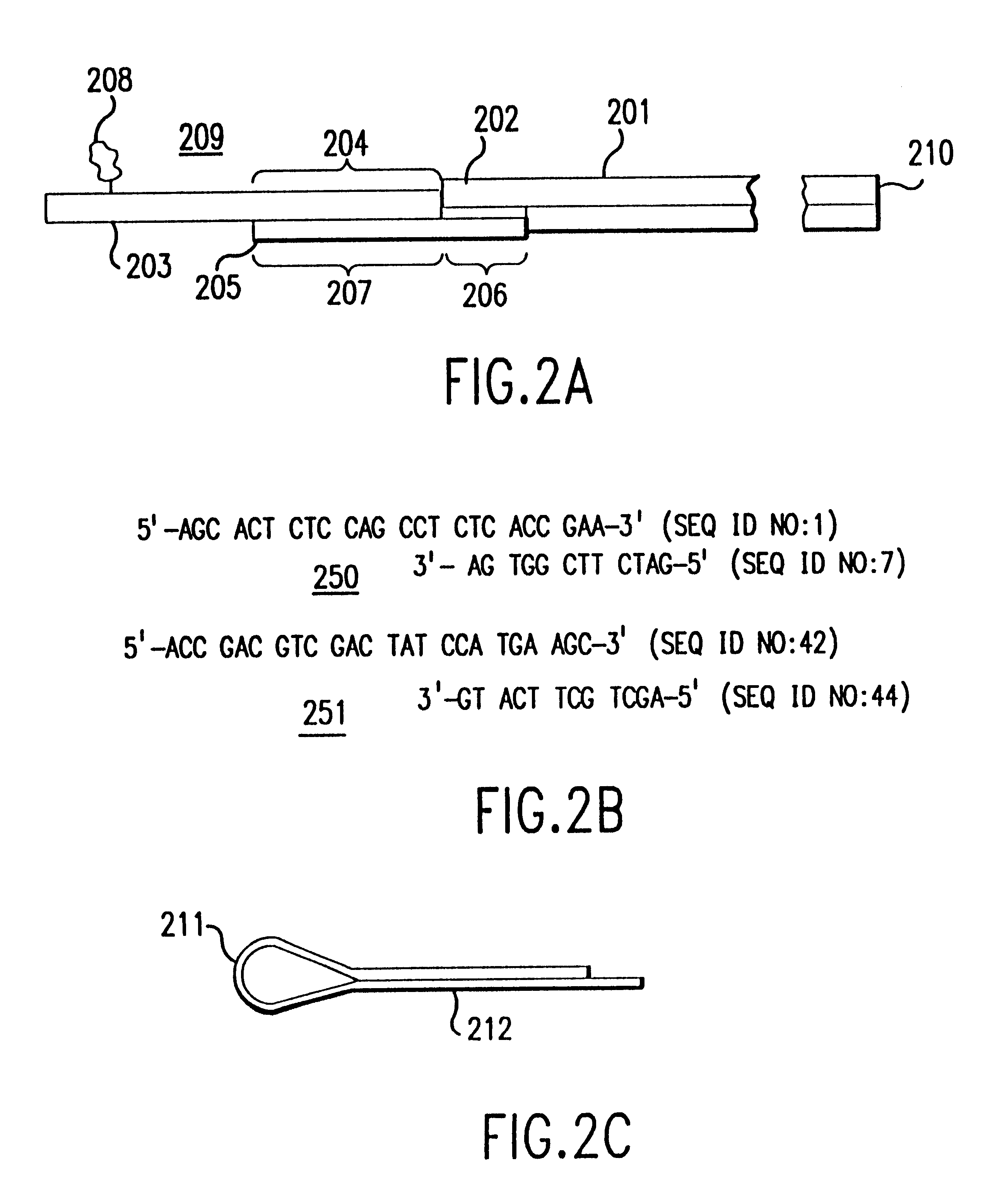Method and apparatus for identifying, classifying, or quantifying protein sequences in a sample without sequencing
a protein sequence and sequence technology, applied in the field of dna sequence classification, identification or determination, and quantification, can solve the problems of cumbersome and uneconomical adaptation of these methods to the problem of recognizing all sequences in a sample, application requiring such a large number of probes is clearly too cumbersome to be economic, and cannot be applied to mixtures, etc., to achieve sufficient discrimination and resolution, quantitative and precise determination or classification, the effect of rapid and economical
- Summary
- Abstract
- Description
- Claims
- Application Information
AI Technical Summary
Benefits of technology
Problems solved by technology
Method used
Image
Examples
example 6.9
contains a more comprehensive, non-limiting list of adapters that can be used according to the invention. All synthetic oligonucleotides of this invention are preferably as short as possible for their functional roles in order to minimize synthesis costs.
Alternatively, adapters can be constructed from hybrid primers which are designed to facilitate the direct sequencing of a fragment or the direct generation of RNA probes for in situ hybridization with the tissue of origin of the DNA sample analyzed. Hybrid primers for direct sequencing are constructed by ligating onto the 5' end of existing primers the M13-21 primer, the M13 reverse primer, or equivalent sequences. Fragments generated with such hybrid adapters can be removed from the separation means and amplified and sequenced with conventional systems. Such sequence information can be used both for a previously known sequence to confirm the sequence determination and for a previously unknown sequence to isolate the putative new g...
example 6.6
illustrates the results of the simulated annealing optimization method. Simulated annealing generally produces a choice of subsequences that achieve the same resolution while using approximately 20% fewer total sequences than a selection guided only by the probability principles previously described. This level of optimization is likely to improve with larger and less redundant databases that represent longer genes.
An alternative to using single target subsequences is to use sets of target subsequences, recognized by sets of identically labeled hybridization probes, to generate one presence or absence indication for the hash code. In this alternative, sets of longer target subsequences would be chosen such that the presence of any target subsequence in the set is a presence indication. Absence means no element of the set is present. If the sets are chosen so that their probability of presence in a single sequence is near 50%, preferably from 10 to 50%, and the presence or absence of...
experiment 1613
is processed similarly along sample pathway 1633, with robot 1630 performing recognition reactions 1616 on cDNA from tissue 1608 as defined by definition 1615, and device 1631 performing fragment separation and detection. Fragment detection data is input by computer 1601 and stored on storage device 1625. In this case, for example, silver staining is used, and detection data is image 1617 of the stained bands.
During experimental performance, instrument control routines 1661 provide the detailed control signals needed by instruments 1630 and 1631. These routines also allow operator monitoring and control by displaying the progress of the experiment in process, instrument status, instrument exceptions or malfunctions, and such other data that can be of use to a laboratory operator.
Third, interactive experimental analysis is performed using the database of simulated signals generated by analysis and design routines 1662 as described in .sctn..sctn.5.4.2 and 5.4.3. Simulated database 16...
PUM
| Property | Measurement | Unit |
|---|---|---|
| melting temperature | aaaaa | aaaaa |
| Tm | aaaaa | aaaaa |
| Tm | aaaaa | aaaaa |
Abstract
Description
Claims
Application Information
 Login to View More
Login to View More - R&D
- Intellectual Property
- Life Sciences
- Materials
- Tech Scout
- Unparalleled Data Quality
- Higher Quality Content
- 60% Fewer Hallucinations
Browse by: Latest US Patents, China's latest patents, Technical Efficacy Thesaurus, Application Domain, Technology Topic, Popular Technical Reports.
© 2025 PatSnap. All rights reserved.Legal|Privacy policy|Modern Slavery Act Transparency Statement|Sitemap|About US| Contact US: help@patsnap.com



